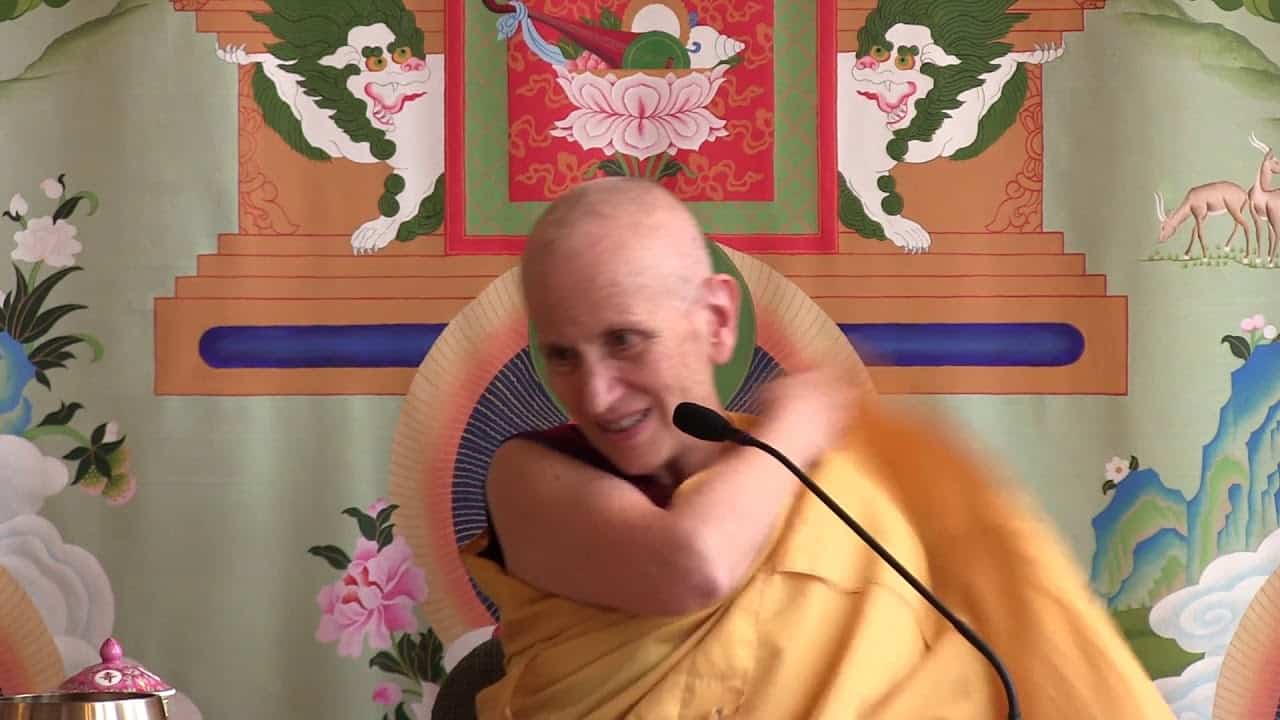The two truths
The text turns to training the mind on the stages of the path of advanced level practitioners. Part of a series of teachings on the Gomchen Lamrim by Gomchen Ngawang Drakpa. Visit Gomchen Lamrim Study Guide for a full list of contemplation points for the series.
- Why the topic of the two truths is important
- Definition of veiled and ultimate truth
- How conventional objects are established
- The dependence of ultimate truths
- How ignorance is the foundation for attachment and anger
138 Gomchen Lamrim: The Two Truths (download)
Contemplation points
- Venerable Chodron taught that it’s important for us to have awareness of both truths: ultimate and veiled. Veiled truths, though they do not exist the way they appear to us, are necessary to function in daily life, interact with others, and learn the Dharma. Ultimate truth on the other hand shows us the ultimate mode of how things exist. Take some time to think about the differences between these two truths and why we are taught to cultivate awareness of both.
- In the context of these teachings, what do “false” and “true” mean?
- Consider that veiled truths are called such because they are perceived by a mind that is veiled by ignorance. The veil does not exist in the object, but rather is an obscuration on our own mind. What does this veil of ignorance compel the mind to perceive that does not exist?
- What is a conventional reliable cognizer? Make some examples. Why can they not perceive the ultimate mode of existence? Why is it important to have them even though they cannot perceive ultimate truth?
- What is the only existent that is not a veiled truth? Why?
- What is the difference in how an arya perceives a veiled truth and how we as ordinary beings do?
- What does it mean that ultimate truths do not exist ultimately. What are ultimate truths dependent on? Why is it that even though emptiness exists conventionally, it is not a conventional truth?
- Consider that just because something appears to a veiled knower doesn’t make it a veiled truth. Venerable Chodron used the example of a lamp: a truly existent lamp may appear true to a consciousness grasping at true existence, but it is not a veiled truth because a truly existent lamp does not exist. The lamp, however, does exist and is a veiled truth. Make more examples of this. Practice differentiating between what does exist (veiled truths) and what does not exist (your perception of truly existent objects). Why is it so important to make this distinction?
Venerable Thubten Chodron
Venerable Chodron emphasizes the practical application of Buddha’s teachings in our daily lives and is especially skilled at explaining them in ways easily understood and practiced by Westerners. She is well known for her warm, humorous, and lucid teachings. She was ordained as a Buddhist nun in 1977 by Kyabje Ling Rinpoche in Dharamsala, India, and in 1986 she received bhikshuni (full) ordination in Taiwan. Read her full bio.


